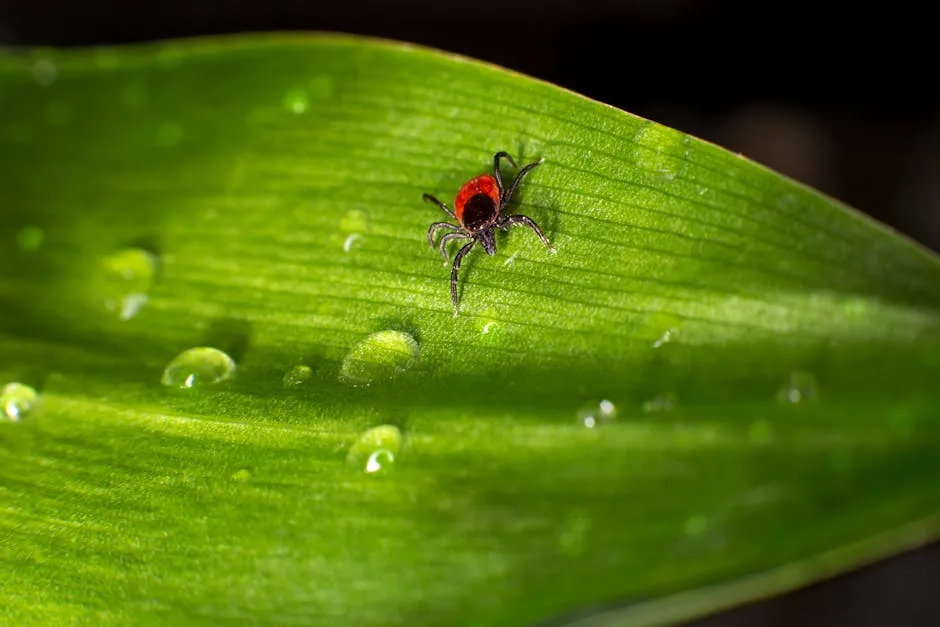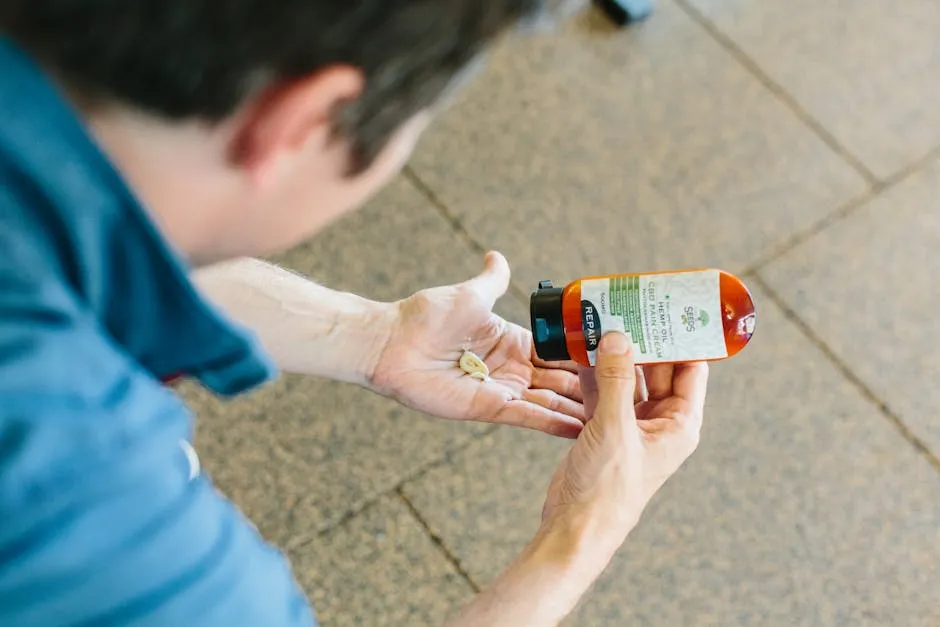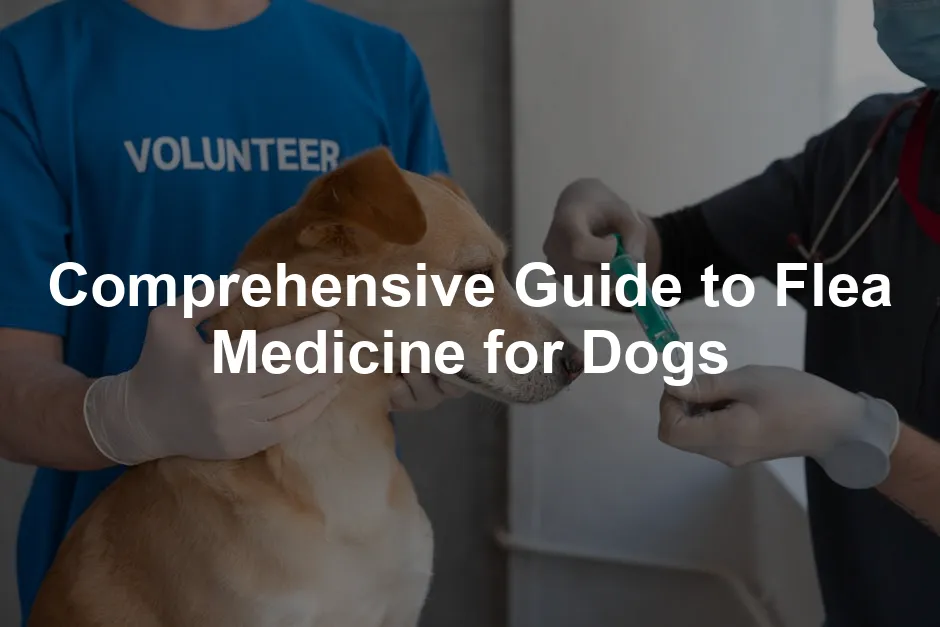Introduction
Flea medicine is essential for your dog’s health. These pesky parasites can cause serious health issues. Fleas and ticks can lead to allergies and infections. Fortunately, several effective treatments are available today. You might want to consider NexGard Chewables for Dogs for a quick and tasty solution to keep those fleas at bay!
Summary and Overview
Preventing fleas and ticks is crucial for your dog’s well-being. These parasites can cause various health problems, such as anemia and skin infections. Fleas can even carry tapeworms, while ticks may transmit Lyme disease and other severe conditions. To learn more about Lyme disease, check out this guide on lyme disease in dogs.
Understanding the risks associated with fleas and ticks is essential for every dog owner. Learn more about Lyme disease and its effects on dogs.
You can choose from different types of flea medications, including oral treatments, topical solutions, and collars. Each has unique benefits and suitability for your pet. Always consult your veterinarian for tailored recommendations based on your dog’s specific needs and lifestyle. For a more natural approach, consider TropiClean Natural Flea and Tick Repellent to keep your furry friend pest-free!

Understanding Fleas and Ticks
What are Fleas and Ticks?
Fleas and ticks are external parasites that feed on your dog’s blood. Fleas are small, wingless insects that reproduce quickly, leading to infestations. A female flea can lay thousands of eggs in her lifetime.
Ticks are arachnids that attach to your dog’s skin, feeding for several days. Both parasites have complex life cycles that include eggs, larvae, and adult stages. Fleas can cause itching and discomfort, while ticks can transmit diseases like Lyme disease and Rocky Mountain spotted fever.
Both fleas and ticks pose risks not only to dogs but also to humans. Preventing these parasites is vital to keeping your pet and family healthy. Regular treatment and environmental control can significantly reduce the risk of infestations. If you’re looking for a comprehensive yard treatment, consider Flea and Tick Powder for Yard to keep your outdoor spaces pest-free!

Types of Flea Medicine for Dogs
Oral Medications
Oral flea treatments are convenient and effective. Popular options include NexGard and Simparica. NexGard is a beef-flavored chew that kills fleas within hours. Simparica also targets ticks and offers month-long protection. Both medications are easy to administer, making them pet-parent favorites. For more information on NexGard, visit the ultimate guide to NexGard for dogs.

Considering the effectiveness of oral medications like NexGard is crucial for flea control. Explore the benefits of NexGard for your dog.
However, oral medications can have downsides. Some dogs may experience gastrointestinal upset. It’s essential to follow dosage instructions carefully. Always consult your vet before starting any medication. This ensures you choose the right option for your dog’s needs. For those who prefer a different option, Simparica Chewable Tablet for Dogs is another fantastic option!

Topical Treatments
Topical flea treatments work by applying a liquid directly to your dog’s skin. Products like Frontline and K9 Advantix are widely used. They kill fleas on contact and prevent further infestations. Most topical treatments are applied monthly, making them easy to integrate into your routine.
These solutions are effective against fleas and ticks. However, they may wash off if your dog swims or bathes frequently. It’s crucial to read the application instructions thoroughly. This helps maximize their effectiveness while keeping your dog safe. For an extra layer of protection, consider K9 Advantix II Flea and Tick Prevention for Dogs.

Flea Collars
Flea collars provide continuous protection against fleas and ticks. They release active ingredients that repel pests over time. Popular options include Seresto and Scalibor, which can last up to eight months. These collars are adjustable and easy to use, making them a hassle-free choice.
While flea collars are effective, they may not work for all dogs. Some pets may have skin sensitivities to the materials used. It’s essential to monitor your dog for any reactions. Regularly check the collar’s fit and condition to ensure ongoing protection. If you’re looking for a reliable flea collar, Seresto Flea and Tick Collar for Dogs is a top choice!

Choosing the Right Flea Medicine
Factors to Consider
When selecting flea medicine for your dog, consider several key factors. First, your dog’s age plays a crucial role. Puppies often need different treatments than adult dogs. Weight is another important consideration. Many products have specific dosage guidelines based on your dog’s size.
Lifestyle matters too. If your dog spends a lot of time outdoors, they may be at higher risk for fleas and ticks. Additionally, existing medical conditions can influence your choice of treatment. Some medications might not be safe for dogs with certain health issues.
Always consult your veterinarian before making a decision. They can provide tailored advice based on your dog’s unique needs and circumstances, ensuring you choose the most effective and safe option. To keep your pup comfortable while you figure things out, consider a washable dog bed for ultimate comfort!

Over-the-Counter vs. Prescription Medications
When it comes to flea treatments, you’ll find both over-the-counter (OTC) and prescription options. OTC medications are readily available and often cost less. They can be effective for mild infestations. However, they may not provide comprehensive protection or effectiveness for more severe cases.
Prescription medications, on the other hand, typically offer stronger, more targeted treatments. These are often safer and better suited for dogs with specific health concerns. However, they require a vet’s consultation, which can add to the overall cost.
Consider potential side effects as well. OTC products may cause irritation or allergic reactions in some dogs. Prescription treatments can have similar risks but usually come with more detailed safety information. Always weigh the pros and cons before choosing a treatment method. And if you need a quick fix for those pesky hairs left behind, a Pet Hair Remover Roller can save the day!

Best Practices for Flea Prevention
Routine Treatment Schedule
Consistency is key in flea prevention. Establishing a routine treatment schedule helps keep fleas at bay. Many veterinarians recommend year-round prevention, even in colder months. Fleas can survive indoors and in protected outdoor areas.
Seasonal changes can also affect flea populations. In warmer months, you may need to adjust your treatment frequency. Pay attention to your dog’s environment and any signs of fleas. Regularly check your dog for fleas, especially after visits to parks or wooded areas. Keeping a consistent schedule will help protect your furry friend from these pesky parasites.

Home and Yard Treatment
Treating your home and yard is crucial for effective flea control. Fleas can thrive in your environment, making it essential to tackle both your pet and surroundings. Start by washing your dog’s bedding in hot water weekly. This helps eliminate any eggs or larvae that may be hiding.
Vacuum carpets and upholstery frequently. Pay special attention to areas where your dog spends time. Dispose of the vacuum bag or empty the canister outside to prevent re-infestation.
Consider using flea sprays specifically designed for the environment. Products like Vet’s Best Flea and Tick Home Spray are effective and safe for pets. Additionally, flea powders can be sprinkled in your yard to kill fleas on contact. Look for options containing diatomaceous earth, which dehydrates and kills fleas. If you want to explore this option, check out Diatomaceous Earth Food Grade.

Regularly treating your home and yard will significantly reduce the risk of flea infestations, ensuring a comfortable environment for your furry friend. For more on managing flea infestations in a multi-dog household, see this article on best practices for reducing flea infestations in multidog households.
Managing flea infestations effectively requires attention to both your pets and your environment. Discover best practices for reducing flea infestations in multidog households.

Safety and Side Effects
Common Side Effects
While flea medications are generally safe, some dogs may experience side effects. Common reactions include vomiting, diarrhea, and lethargy. Allergic reactions can occur, leading to itching or swelling at the application site. For more information on allergic reactions, see this guide on how to recognize allergic reactions in dogs after bee stings.

Being aware of potential side effects is crucial when administering flea medications. Learn how to recognize allergic reactions in dogs.
If your dog shows any adverse reactions, contact your veterinarian immediately. They may recommend discontinuing the medication or switching to a different treatment. Always monitor your dog after administering any new medication. This proactive approach helps ensure your pet’s safety and well-being. If you’re worried about your dog’s health, consider having a Pet First Aid Kit handy for emergencies!

Conclusion
Flea prevention and treatment are vital for your dog’s health. Regularly using flea medicine protects your furry friend from discomfort and serious health issues. Consistent treatment is essential, as fleas can quickly return if not managed.
Proactive measures will keep your pet happy and healthy. Be sure to consult your veterinarian for personalized advice tailored to your dog’s unique needs. Together, you can create an effective flea prevention plan that works for both you and your beloved pet. And don’t forget, a Dog Pooper Scooper can make clean-up a breeze!

FAQs
How often should I administer flea medicine to my dog?
The frequency of flea medicine varies by product type. For example, oral medications like NexGard are given monthly. Topical treatments, such as Frontline, typically require monthly application as well. Flea collars can last several months, providing continuous protection. Always stick to the recommended schedule to maintain effectiveness. Missing doses can lead to reinfestation. Regular treatment is essential for effective flea control for dogs and overall dog health.
Can I use flea medicine on puppies?
Yes, you can use flea medicine on puppies, but age matters. Many products, like NexGard, can be given to puppies starting at eight weeks old. Always check the label for age and weight restrictions. Some treatments may not be suitable for very young pups. Consult your veterinarian for the best flea treatments for puppies, ensuring safety and effectiveness. Choosing the right flea control is crucial in preventing discomfort and health issues.
Are there natural alternatives to chemical flea treatments?
Yes, there are natural alternatives to chemical flea treatments. Options like diatomaceous earth and essential oils can repel fleas. However, their effectiveness may vary. Some pet owners also use apple cider vinegar mixed with water as a spray. It’s important to note that natural remedies often have limited scientific backing. Always consult your veterinarian before trying these alternatives. They can recommend safe and effective methods for flea control without compromising your dog’s health.
What should I do if my dog has fleas despite treatment?
If your dog has fleas despite treatment, don’t panic. First, check the product you used; it may not be effective against all life stages of fleas. Consider trying a different treatment or switching to a combination product. Next, thoroughly clean your home. Wash pet bedding in hot water and vacuum carpets frequently. You may also need to treat your environment with flea sprays or powders. If the problem persists, consult your veterinarian for further advice and treatment options.
Is it necessary to treat my dog for fleas year-round?
Yes, treating your dog for fleas year-round is advisable. Fleas can survive indoors during colder months and may even thrive in heated environments. In fact, studies show that flea populations can rebound quickly if treatments are stopped. Additionally, ticks are a year-round threat in many areas. Keeping up with preventive care protects your dog from infestations and health risks. Regular treatment ensures your furry friend stays happy and healthy no matter the season.
Please let us know what you think about our content by leaving a comment down below!
Thank you for reading till here 🙂
All images from Pexels





